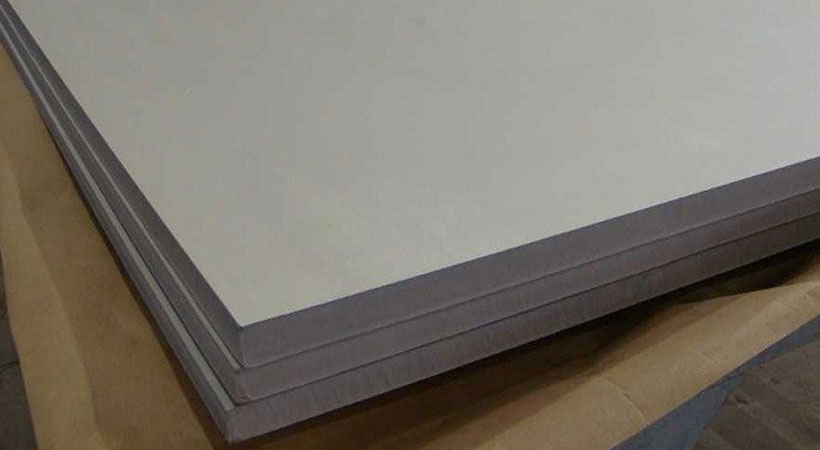A240 a203gr.a metal 15pc knife block
A240 a203gr.a steel third quarter 2018
Type 304 and Type 316 stainless steels are unaffected weak bases such as ammonium hydroxide, even in excessive concentrations and at excessive temperatures. The same grades exposed to stronger bases corresponding to sodium hydroxide at high concentrations and excessive temperatures will doubtless experience some etching and cracking. Increasing chromium and nickel contents provide increased resistance. Unlike carbon steel, stainless steels do not undergo uniform corrosion when uncovered to wet environments.
Unprotected carbon metal rusts readily when uncovered to a combination of air and moisture. The ensuing iron oxide surface layer is porous and fragile. In addition, as iron oxide occupies a larger volume than the unique metal, this layer expands and tends to flake and fall away, exposing the underlying steel ASTM A203GR.A Nickel-Alloy steel plate to additional attack. This passive movie prevents further corrosion by blocking oxygen diffusion to the steel surface and thus prevents corrosion from spreading into the majority of the metallic.
How is steel plate strength calculated?
Divide the load at fracture by the area of the steel plate to determine the ultimate tensile strength. In the example, dividing 5,000 lbs. by 30 square inches equals an ultimate tensile strength of approximately 166.67 lbs. per square inch.
A240 a203gr.a metal plate 1/4
Types 304 and 316 stainless steels are commonplace materials of construction involved with water. However, with increasing chloride contents, larger alloyed stainless steels similar to Type 2205 and super austenitic and super duplex stainless steels are used.
At elevated temperatures, all metals react with scorching gases. The most common high-temperature gaseous combination is air, of which oxygen is essentially the most reactive component. To avoid corrosion in air, carbon metal is limited to roughly 480 °C (900 °F). Oxidation resistance in stainless steels increases with additions of chromium, silicon, and aluminium. Small additions of cerium and yttrium enhance the adhesion of the oxide layer on the floor.
A240 a203gr.a metal plate 4×8 worth
- Resistance to different gases is dependent on the type of gasoline, the temperature, and the alloying content material of the chrome steel.
- The minimum 10.5% chromium in stainless steels offers resistance to roughly 700 °C (1,300 °F), whereas 16% chromium provides resistance up to roughly 1,200 °C (2,200 °F).
- Type 304, the most common grade of stainless-steel with 18% chromium, is proof against approximately 870 °C (1,600 °F).
- Other gases, such as sulfur dioxide, hydrogen sulfide, carbon monoxide, chlorine, additionally assault stainless steel.
This movie is self-repairing, even when scratched or briefly disturbed by an upset situation in the environment that exceeds the inherent corrosion resistance of that grade. The properties of duplex stainless steels are achieved with an overall lower alloy content material than comparable-performing tremendous-austenitic grades, making their use cost-efficient for a lot of purposes. The pulp and paper business was one of many first to extensively use duplex chrome steel. Today, the oil and gasoline trade is the largest consumer and has pushed for more corrosion resistant grades, resulting in the development of super duplex and hyper duplex grades.
China United Iron and steel Limited export ASTM A203/A203M Nickel-Alloy steel plate of A203GR.A,ASTM A203GR.A,A203GR.A Steel,A203GR.A HIC,A203GR.A NACE. If you have inquiry for that, please contact us by admin@corten-asteel.com
The minimal 10.5% chromium in stainless steels supplies resistance to approximately seven-hundred °C (1,300 °F), while sixteen% chromium supplies resistance as much as roughly 1,200 °C (2,200 °F). Type 304, the most typical grade of stainless steel with 18% chromium, is proof against approximately 870 °C (1,600 °F). Other gases, corresponding to sulfur dioxide, hydrogen sulfide, carbon monoxide, chlorine, additionally attack chrome steel. Resistance to other gases relies on the type of fuel, the temperature, and the alloying content material of the chrome steel. Stainless metal is now used as one of the materials for tramlinks, together with aluminium alloys and carbon steel.
What is ss400 grade steel?
SS400 steel is a structural hot Rolled steel in the form of plates, sheets & strips for general structural applications. SS400 is a material grade and designation defined in JIS G 3101 standard. The structural quality hot rolled SS400 steel is more reliable in its tensile strength than SS330 steel.
A240 a203gr.a steel plate 70mm

Duplex grades are typically most popular thanks to their corrosion resistance and higher energy, permitting a reduction of weight and an extended life in maritime environments. Stainless steels have a long history of utility in touch with water as a result of their excellent corrosion resistance. Applications include a range of conditions including plumbing, potable water and wastewater treatment, desalination, and brine therapy.
